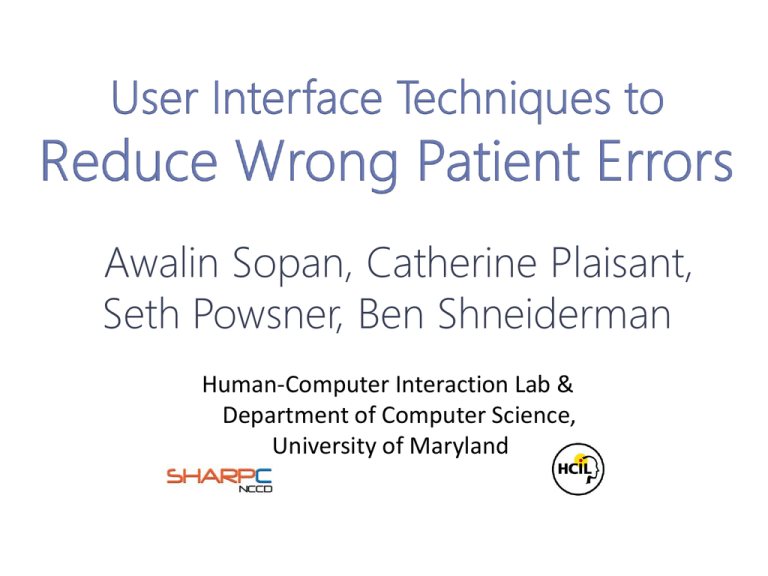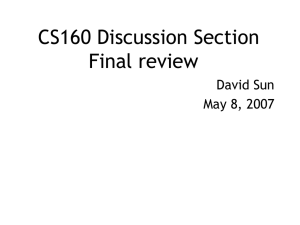Awalin Sopan, Catherine Plaisant, Seth Powsner, Ben Shneiderman Human-Computer Interaction Lab &
advertisement

Awalin Sopan, Catherine Plaisant, Seth Powsner, Ben Shneiderman Human-Computer Interaction Lab & Department of Computer Science, University of Maryland http://www.nytimes.com/2002/06/18/health/oops-wrong-patient-journal-takes-on-medical-mistakes.html Mrs. Morris, 67 Mrs. Morrison, 77 They were in same hospital floor. Mrs. Morris was taken to the operation room for the heart surgery • A drug administered to wrong patient • Reading of wrong patients’ test results • Patients miss needed treatment • etc. multitasking fatigue interruption urgency long work-hours Error Classification what are the error-scenarios clinicians face Task Analysis which stage is more susceptible to a particular type of error 27 Specific Techniques what to do, and then how to do it Mistake Slips Failure to recognize Mistake Slips Failure to recognize Recalling the wrong patient due to short term memory failure, name similarity, unfamiliarity with the patient, fatigue. Mistake Slips Failure to recognize Mechanical errors such as wrong key press, mouse slip, or errors due to unreadable fonts and too small button size. Mistake Slips Failure to recognize Failures to detect errors due to interruptions, multitasking, absence of relevant information. Facilitate recall: ▪ Provide more context: room number, photo,… Avoid confusion: ▪ Emphasize the salient features: age, chief complaint,… ▪ Use at least two sources of identification: name, medical record number,… Poor recall strategy, more mistakes Allow sorting Always show patient’s full name Scan RFID to retrieve the patient Use indoor location to retrieve the patients Improve target-selection Improve text-readability Highlight target under cursor Poor selection mechanism, more slips Highlight row under cursor Use an icon-based 2D grid instead of list Draw attention to patient information ▪ Taieb-Maimon et al. : recognition increased from 7% to 43% with photo Use decision support system Poor verification, less error recognition Use visual summary of patient history Avoid visual distraction Re-enter ID ▪Human Error Classification ▪Attention Theory ▪Context Recovery Process ▪Cognitive Task Analysis ▪User Interface Design Principles ▪Expert Feedback ▪Medical Literature Categorization of the error-types, and sources Suggestions of User Interface remedies Prototype demonstrating the techniques Small changes in the UI can make big difference in patient safety Include Clinicians and HCI researchers in the design process To err is human, the systems should make up for it www.cs.umd.edu/hcil/WPE www.youtube.com/watch?v=CrwOJIrnsg8 Awalin Sopan, Catherine Plaisant, Seth Powsner, Ben Shneiderman @awalinsopan awalin@cs.umd.edu We thank the Patient-Centered Cognitive Support under the Strategic Health IT Advanced Research Projects Program (SHARP) from the Office of the National Coordinator for Health Information Technology (Grant No. 10510592).



